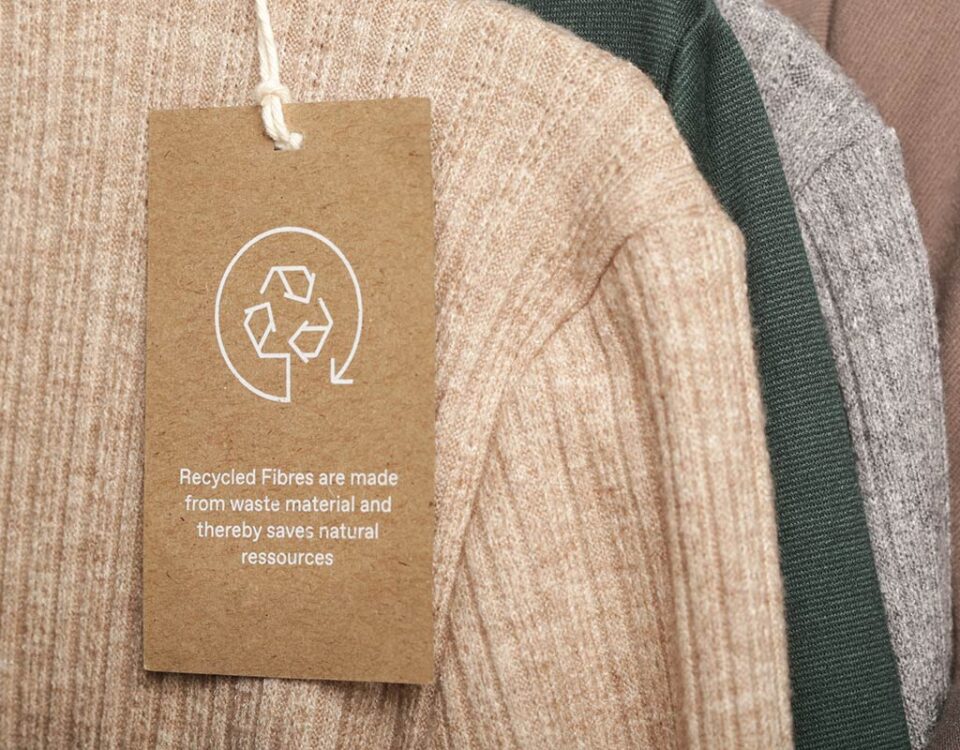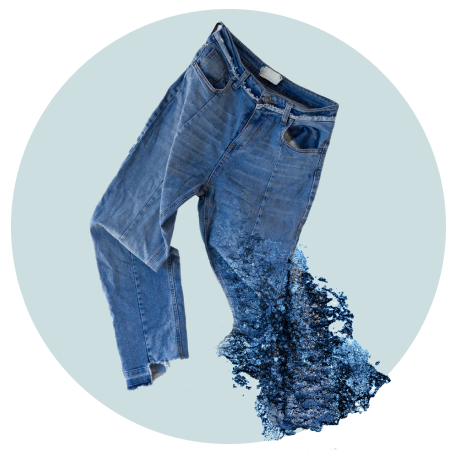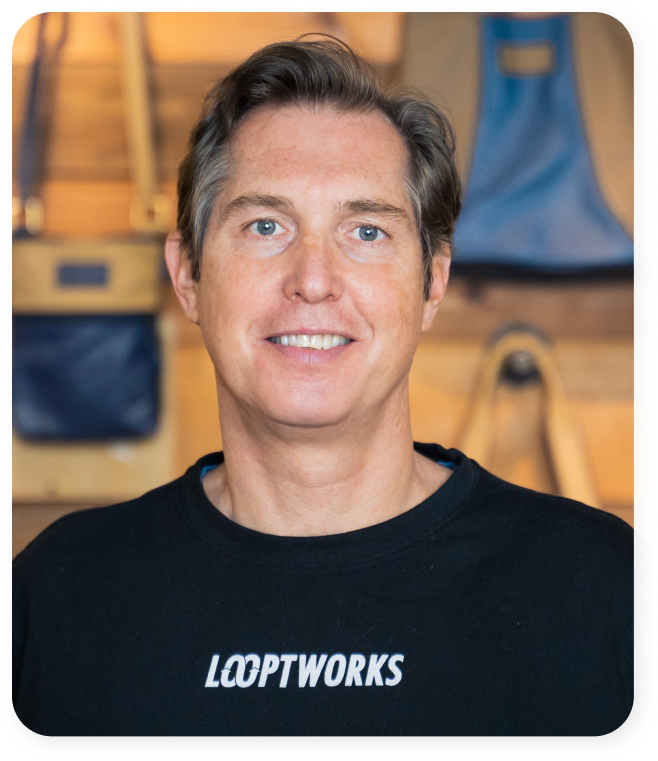

What Will the Apparel Industry Look Like by 2030?
When we were kids, we imagined that by 2030, we would have flying cars and live on Mars. Although reality is quite different, we’re making lifestyle changes—especially in what we wear—to help our planet. As we reach the halfway point of a decade that once felt unreal, there are encouraging trends about how clothing makers and buyers can reduce carbon emissions, save water, and prevent textile waste from filling landfills. Here are seven research-based predictions about where the industry could be in just five years.
Prediction 1: Climate change will drive growth in sustainable fashion.
As climate change leads to more extreme weather, the fashion industry will prioritize environmental, social, and governance issues. A recent survey from McKinsey and Company revealed that industry leaders view ESG as their top priority and challenge in the coming years.
As executives take climate risks seriously, the sustainable fashion market is expected to grow from $7.8 billion today to over $33 billion by 2030, according to a report from Coherent Market Insights. This growth will come from consumers wanting sustainable fashion and regulations pushing apparel makers to adopt greener practices. Sustainable Fashion Forum predicts brands will go beyond temporary collections of sustainable fabrics and develop strong, long-term partnerships with innovation leaders, ensuring sustainable styles are a permanent fixture in retail.
Prediction 2: Fiber-to-fiber recycling could generate $1.5 billion a year from textile waste.
The textile industry is increasingly adopting fiber-to-fiber recycling, which involves reprocessing old textiles into new fiber for garments, to move towards a circular economy. Fashion for Good’s Sorting for Circularity USA Project found that up to 56% of textiles thrown away could be recycled into fiber. The research estimates that diverting textile waste from landfills and turning it into fiber-to-fiber recycling could generate $1.5 billion in annual value.
Globally, the textile recycling market is projected to grow from $4.35 billion today to $6.13 billion by 2030, according to a recent forecast. Cotton is expected to lead the recycling market, with mechanical recycling becoming more common than chemical recycling.
Prediction 3: Products will be made with circularity in mind.
The Ellen MacArthur Foundation guides brands and sustainability experts in achieving circularity. The foundation offers a vision of how to redesign the fashion industry for a circular economy, which reduces the need for finite resources by ensuring apparel is:
Related: Designing for Circularity: Where Brands Can Start
Both Sustainable Fashion Forum and the Global Fashion Agenda’s 2030 Fashion Section Vision predict circular systems will create new revenue for brands if they promote these models rather than traditional sales. Instead of just encouraging new purchases, brands can shift their messaging to emphasize repair, maintenance, and building lasting customer relationships.
Prediction 4: The industry will improve wages and conditions.
Last year, the FABRIC Act was reintroduced in the U.S. Senate. If passed, it aims to safeguard garment workers’ rights, support local manufacturing, and hold brands accountable for their partners’ labor practices. This could set off a wave of similar bills and push more governments to protect workers.
As advocates push for change, Sustainable Fashion Forum expects brands to use their influence to assist garment workers facing unfair pay and unsafe conditions. Similarly, Global Fashion Agenda anticipates that by 2030, the industry will adopt global standards for fair pay, human rights, and mechanisms for workers to file grievances.
Prediction 5: Materials will be sourced more sustainably.
As brands shift away from harmful materials like fossil fuels and traditional leather, we may soon see new stories about the origins of items like sandals and handbags.
Representatives from the European Climate Pact believe that by 2030, more affordable leather alternatives made from sources like cactus and apples will be accessible. They also expect polyester to be produced from recycled plastics. Global Fashion Agenda forecasts that by 2030, materials like cotton, polyester, man-made fibers, and wool will be sourced from responsible providers, with more of it being recycled or regenerative.
Prediction 6: Greenwashing will face stricter rules.
In recent years, apparel brands have been sued for misleading sustainability claims, which highlights a need for clear guidelines on environmental messaging.
In the next few years, we can expect regulations to address greenwashing, including standardized definitions of sustainability terms and more reliable data about the environmental impacts of products. As consumers become more aware, they will demand transparency and accountability from their favorite brands.
Prediction 7: Transparency will go digital.
With AI in our everyday lives, new tools will help consumers engage in a circular economy. For instance, digital sampling allows people to virtually try on clothes, reducing guesswork and waste from online shopping. Other apps will help consumers locate nearby rental and repair services.
Digital Product Passports (DPPs) are also expected to gain popularity, according to Sustainable Fashion Forum. DPPs, driven by EU regulations, help brands track products from creation to disposal, enhancing supply chain transparency. The QR codes on DPPs will provide consumers with details about a product’s environmental and social impact, enabling them to make choices that reflect their values. DPPs also hold information on a garment’s recyclability and repairability, aiding in extending its lifespan.
Join the vision!
Research shows a bright future for the fashion industry in the next five years. However, achieving this vision requires collaboration among brands, manufacturers, recyclers, educators, advocacy groups, and policymakers. At Looptworks, we’re ready to collaborate. Contact us to learn about our fiber-to-fiber recycling services and how we can help your organization thrive in the circular economy.
We’d love to hear from you!


Denine has over 20 years of experience driving new business opportunities for leading companies, including E.I. DuPont de Nemours & Company, Inc., The Dow Chemical Company, Outlast Technologies, and DST Systems. She holds a BS from the University of Pittsburgh and a Certification in Executive Management from the Kenan-Flagler School of Business at the University of North Carolina at Chapel Hill.

Tami is a senior accounting leader with over 16 years of experience in the manufacturing and textile industry. Her specialties include process development and implementation, mergers and acquisitions, job and project costing and analysis, and managing complex teams and technical projects. Tami has served as Chief Financial Officer and Controller for a variety of innovative companies, where her analytical skills and strategic mindset helped organizations create efficiencies in their financial systems.

Kelley is a passionate and strategically minded business development leader with more than two decades of experience in the sporting goods apparel industry. He has experience in product construction, league partnerships, retail relationships, supply chain management, sustainability, circularity, and carbon footprint management. Kelley builds successful partnerships by putting the customer first while simultaneously advancing his organization’s business objectives.

Suzy is a product leader and operations expert with more than 25 years of experience in the textile industry. She is passionate about finding creative solutions to complex problems and motivating people to action through vision, strategy, collaboration, and communication. Suzy has proven expertise in product development, sustainability, marketing, supply chains, and innovating processes and best practices to drive results.

Scott is a visionary leader with more than 32 years of experience in strategic branding, innovative product creation, supply chain sustainability, and sales and marketing for global organizations. He founded Looptworks in 2009 as an industry solution for turning excess materials into upcycled consumer products. In 2022, Scott transitioned the company to a B2B business model focused on eliminating global textile waste through closed-loop solutions.

Scott is a visionary leader with more than 32 years of experience in strategic branding, innovative product creation, supply chain sustainability, and sales and marketing for global organizations. He founded Looptworks in 2009 as an industry solution for turning excess materials into upcycled consumer products. In 2022, Scott transitioned the company to a B2B business model focused on eliminating global textile waste through closed-loop solutions.